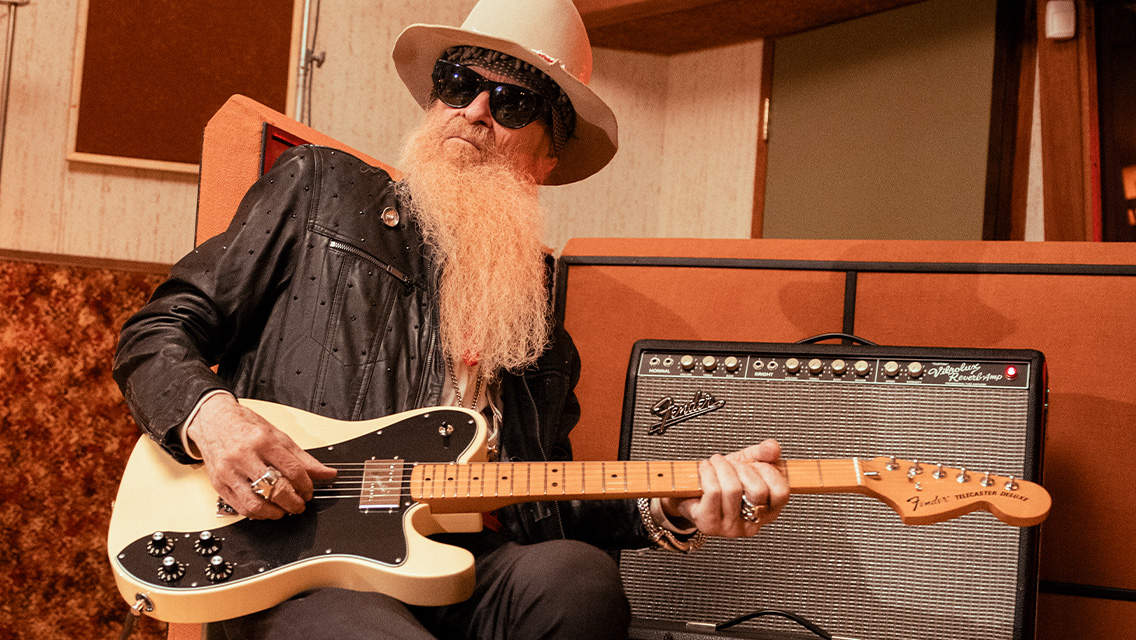3 Min Read
Breaking Down the American Original '60s Telecaster
This workhorse guitar helped change music with the creative explosion of the 1960s in country, R&B and rock. Learn more about the guitar that pays that era tribute, the American Original '60s Telecaster.

Introduced in early 1951, it didn’t take long for the Telecaster to gain mainstream acceptance, even though it wasn’t necessarily along the lines its makers intended.
Leo Fender and the staff of his small Southern California instrument- and amp-making company initially set out to build a revolutionary new guitar to service the region’s Western swing and dance band players. That’s what happened in the early days, as artists like Jimmy Wyble, Charlie Aldrich, Jimmy Bryant, Roy Watkins and Bill Carson took to the instrument with missionary zeal.
But little did they know that the Tele would cross over to genres like rock and roll, R&B and country, as more and more musicians gravitated to its trademark twang and workhorse capabilities.
In the country world, Luther Perkins accompanied Johnny Cash from 1954 on by playing bright, catchy lines on a Telecaster and an Esquire (the Tele’s single-pickup sibling). Farther west, in Bakersfield, Calif., the Telecaster would become the foundation of the “Bakersfield Sound” pioneered in the later 1950s and popularized in the 1960s by Buck Owens and his band, the Buckaroos, Merle Haggard and the Strangers, and others.
In July of 1956, the Telecaster entered the rock realm when Johnny Burnette and the Rock and Roll Trio recorded an energetic version of 1951 blues tune “The Train Kept-A-Rollin,” as lead guitarist Paul Burlison used his Telecaster to play one of the first recorded instances of a contemporary fuzz guitar sound. In July 1957, Dale Hawkins scored what was probably the first Telecaster-fueled U.S. Top 40 hit with “Suzie Q,” a song built on a catchy guitar lick by his band’s young guitarist, James Burton.
In the R&B world, players such as B.B. King and Clarence “Gatemouth” Brown took readily to the Telecaster. And when the great Muddy Waters, the man who electrified Delta blues, first visited England in 1958, he shocked audiences who were expecting folksy acoustic sounds by blasting out loud, stinging blues on his Telecaster.
That set the stage for the Telecaster to jump overseas with the decade closing, as those Tele-fueled sounds influenced quite a few English teenagers, a group that included Keith Richards, George Harrison, Jeff Beck, Jimmy Page, Eric Clapton, Pete Townshend, Roger “Syd” Barrett, David Gilmour and Andy Summers.
Each one of those luminaries helped usher in the British Invasion of the mid-1960s, when the Beatles, the Rolling Stones, the Yardbirds, Led Zeppelin, the Who, Pink Floyd and the Police recorded and released several seminal albums, all heavily featuring the Telecaster. That’s not to mention it’s growing influence in country and R&B, as well.
After all, by 1968, the Telecaster-slinging Owens and Haggard had each hit No. 1 on the Billboard country chart, Waters played his ever-present Telecaster on the Super Blues album with Bo Diddley and Little Walter, Paul McCartney used an Esquire to record guitar parts in “Good Morning Good Morning” and “Being for the Benefit of Mr. Kite” for the Beatles’ momentous eighth album, Sgt. Pepper’s Lonely Hearts Club Band, and Barrett used his Tele and Esquire models to record Pink Floyd’s debut album, The Piper at the Gates of Dawn.
And that’s just the name a few of the 1960s musical milestones in which the Telecaster played a huge role.
To celebrate that explosive period of creativity, Fender created American Original '60s Telecaster, which was designed to recreate the look and feel of guitars of that era.
As such, here is a list of the features you need to know on the American Original ‘60s Telecaster:
Vintage Pickups
The American Original ‘60s Telecaster boasts Pure Vintage ’64 single-coil Telecaster pickups that are as period-correct as possible. These pickups have enamel-coated coil wire to the cloth-covered output wires, fiber bobbins and alnico 5 magnets. The bridge pickup’s copper shielding plate adds some zing to your tone, while the pole pieces are staggered for balanced volume between the strings.
Vintage-Style Hardware
From the bridge to the string tree and tuning machines, every piece of hardware is just like the original. The three-saddle bridge provides greater output, sustain and tone. And with two strings for each saddle, there is more string pressure against the body.
Vintage Neck
The mid-‘60s “C”-shape neck profile will fit comfortably in your hand and suits any playing style. The 9.5”-radius fingerboard is slightly flatter than a vintage-style 7.25” radius, providing a comfortable fret-hand feel. What’s more, vintage-tall frets make it easier to bend notes without fretting out.
Vintage Look
The nitrocellulose lacquer finish not only lets the guitar’s body breathe with its true tonal character, it also ages and wears in a distinctively personal way.
Shop the American Original Series here.
Don’t miss out!
Be the first to know about new products, featured content, exclusive offers and giveaways.


